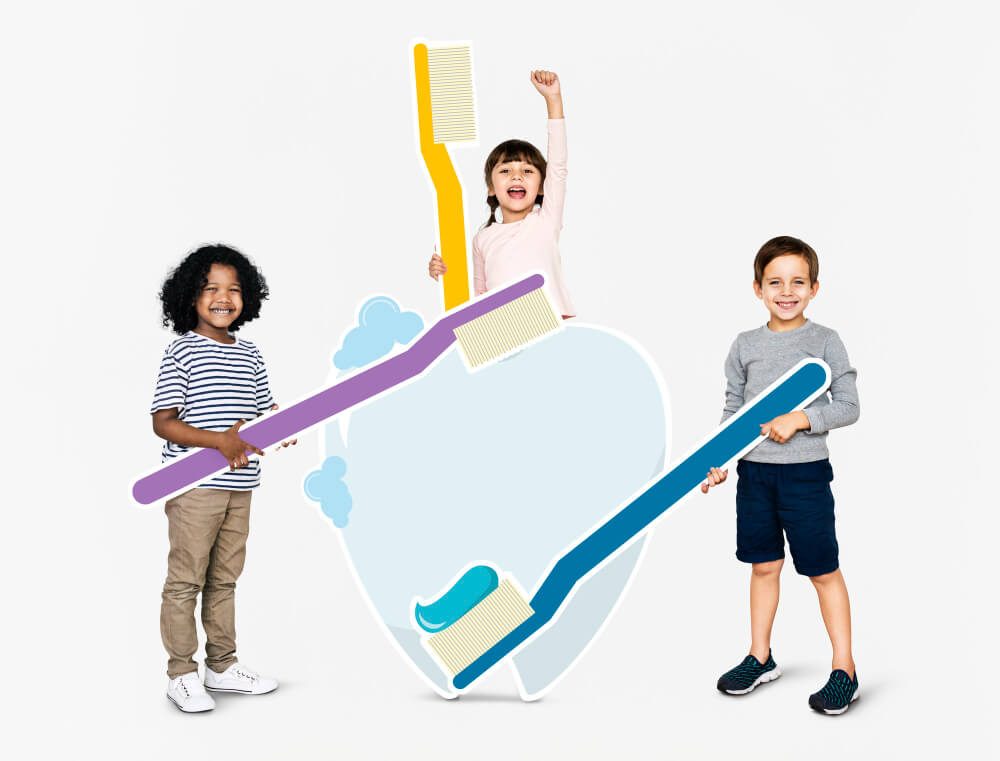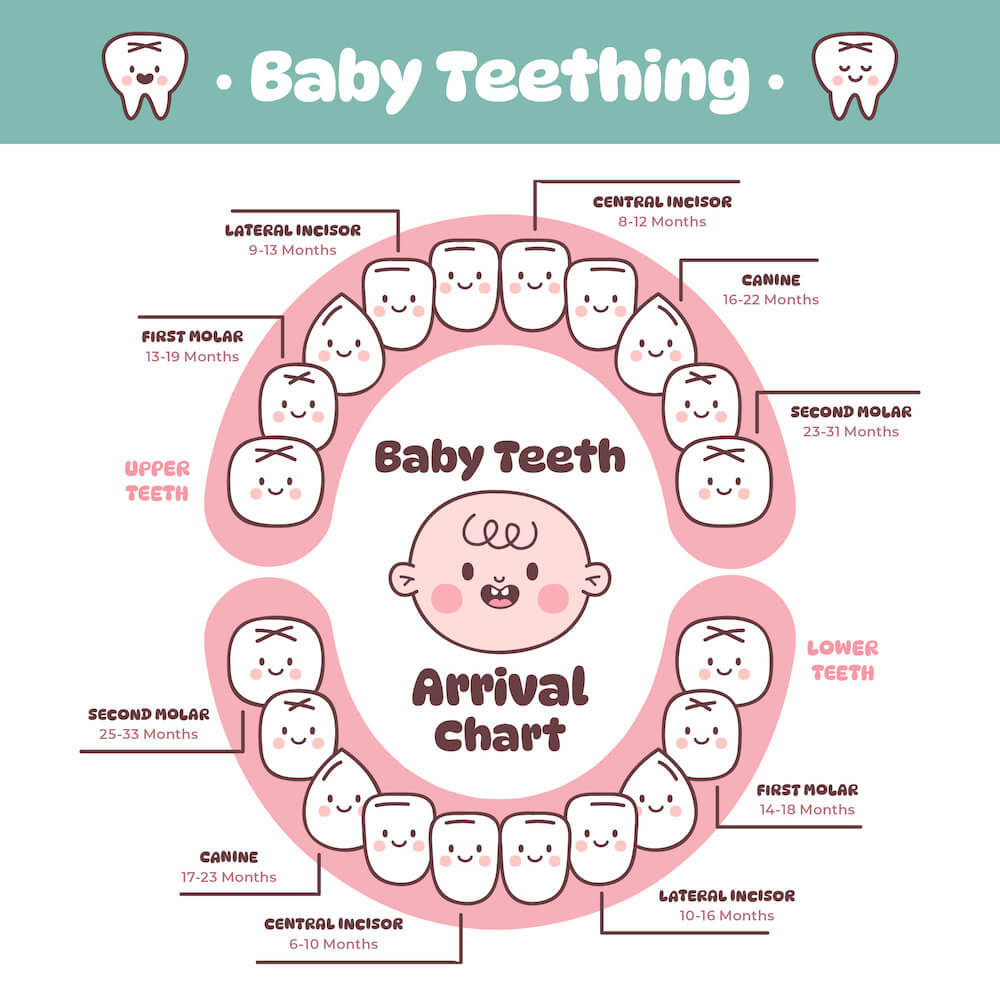Comprehensive Parents Guide to Looking After your Child’s Teeth

As parents, ensuring your child’s health and well-being is a top priority. One of the most crucial aspects of their overall health is their dental care.
Developing good oral hygiene and eating habits from an early age helps prevent tooth decay, cavities, and gum disease while setting the foundation for a lifetime of healthy smiles.
This comprehensive guide will provide parents with essential tips on looking after their child’s teeth, from infancy to adolescence.
Importance of Children’s Dental Health
Oral health is vital for your child’s overall well-being. Poor dental hygiene can lead to pain, infections, difficulty eating, and even affect speech development.
Additionally, childhood dental issues can continue into adulthood if not addressed early. Maintaining healthy teeth contributes to self-confidence and overall good health.
Common Dental Issues in Children
- Tooth Decay (Cavities) – One of the most common childhood health problems, often caused by sugary foods and poor oral hygiene and vitamin deficiency
- Gum Disease (Gingivitis) – Early-stage gum inflammation due to plaque buildup and sometimes tartar build up.
- Teething Issues – Pain and discomfort as baby teeth erupt.
- Thumb-Sucking and Pacifier Use – Can lead to misaligned teeth if prolonged.
- Dental Trauma – Accidents leading to broken or chipped teeth
- Small Jaws/Crooked Teeth – While this can be influenced by genetics, small jaws and crooked teeth can be indicative of tongue posture issues or breathing and sleeping issues

Baby’s First Teeth: What Parents Should Know
When Do Baby Teeth Appear?
A child’s first teeth, also known as primary teeth or milk teeth, can begin emerging around six months of age.
Not every child is the same, so some babies will have their first baby teeth come earlier than 6 months and some babies may not get their first baby teeth until after 12 months old. By the age of three, most children will have all 20 primary teeth.
Signs of Teething
- Excessive drooling
- Puffy Gums
- Fussiness
- Irritatable
- Chewing on fingers and objects
- Difficulty Sleeping
- Ear Pulling
- Rejecting Food
- Rubbing chin and cheeks
- Rosy red cheeks
How to Help your Child with Teething Discomfort
To alleviate discomfort, you can:
- Use a clean, cold teething ring or damp washcloth.
- Gently massage your child’s gums with a clean finger.
- Offer safe teething toys to chew on
- Wrap a piece of ice with a cloth to rub onto the gums
- Avoid any teething toys that may leak (eg liquid teething toys) or potentially choke your baby (eg teething necklace)

Oral Hygiene Routine for Different Ages
0-2 Years Old
- Begin cleaning your baby’s gums with a soft, damp cloth after feedings.
- Once the first tooth appears, you can use a soft-bristled infant toothbrush
- Some parents like using a rubber finger brush
- Toothpaste is not absolutely necessary at this age, and fluoride free toothpaste is recommended
- Do not use fluoride toothpaste if your toddler does not know how to spit
- If using kids fluoride toothpaste, use a tiny smear of toothpaste (about the size of a grain of rice).
- Do not put your baby to bed at any time of the day with a bottle, as this can cause baby bottle tooth decay.
- Close to age 2, introduce floss sticks to clean in between gaps of teeth
- Schedule your child’s first dental visit by their first birthday or when their first tooth erupts.
3-6 Years Old
- Around age 6 the first baby incisor teeth get wobbly and fall out to be replaced by the adult teeth
- The 6 year old adult molars will also start growing at the back of the mouth behind the baby molars
- When considering toothpastes
- If you child doesn’t know how to spit the toothpaste out – use fluoride free toothpaste to avoid the risk of swallowing fluoride and causing fluorosis (weak teeth)
- If your child knows how to spit toothpaste out – consider using children’s strength fluoride toothpaste
- Children’s strength fluoride toothpaste usually has lower fluoride concentration compared to adult toothpaste .e.g 500 parts per million vs adults 1000+ parts per million
- Teach your child to brush their teeth twice a day with a smear of toothpaste amount of fluoride toothpaste.
- Set up good dietary habits by encouraging calcium and vitamin D rich foods with limited amounts of sugary foods and drinks (including fruit juice, soft drinks and cordial)
- Brush for 2 minutes each time to ensure teeth are brushed properly
- Supervise brushing to ensure proper technique and prevent swallowing toothpaste.
- Continue building flossing habits as soon as your child is age 2-3. Kids floss sticks are easy and fun to use with different colours and flavours
- Monitor their jaw development and growth – you should see small gaps between the baby teeth so that there is enough space for the larger and wider adult teeth to fit. If there are no gaps between the baby teeth, then there is a high likelihood the adult teeth will come out crooked
7-12 Years Old
- All 20 baby teeth (ten on the top and ten on the bottom jaw) will get wobbly and fall out during this age group. Some kids might be early and some kids might be later
- Your child can start using adult strength fluoride toothpaste
- Encourage independence in brushing but continue to monitor their technique.
- This is the age to get the habit right with brushing twice daily for 2 minutes
- Reinforce the importance of flossing daily.
- Provide a balanced diet rich in calcium and vitamin D and limit sugary snacks.
- Regular 6 monthly dental check-ups are crucial to monitor any developmental issues.
- Ideal jaw growth and development should allow enough room for the adult teeth to fit and be straight – if the adult teeth come out crooked or rotated, then the jaw is likely underdeveloped and too small. It is best to talk to your dentist about it
Teenage Years (13+)
- By this age, children should have 28 adult teeth altogether. There will be wisdom teeth that usually come out around age 17 to 21
- Reinforce good oral hygiene habits – brushing 2 times daily for 2minutes each time
- Flossing daily should be part of their habit – keep the floss next to the toothbrush
- Monitor for signs of gum disease, cavities, and wisdom teeth development.
- If your child plays contact sports, ensure they use a mouthguard to prevent dental injuries.
- Orthodontic treatment may be needed to correct crooked or misaligned teeth.
Preventing Tooth Decay and Cavities
Healthy Eating Habits
- Limit sugary foods and beverages, including juices and soft drinks.
- Encourage water consumption, especially fluoridated tap water.
- Provide tooth-friendly snacks like cheese, yogurt, nuts, and crunchy vegetables.
The Role of Fluoride
Fluoride helps strengthen tooth enamel and prevent decay. In Australia, most tap water contains fluoride, which benefits oral health. Additionally, fluoride toothpaste and professional fluoride treatments from your dentist can further protect teeth.
The Importance of Diet for Children’s Dental Health
A well-balanced diet plays a crucial role in maintaining healthy teeth and gums. The foods your child consumes directly affect their oral health, influencing the risk of cavities and gum disease.
How Carbohydrates and Sugars Affect Teeth
Many parents know that sugary foods contribute to cavities, but fewer realize that all carbohydrates—including bread, pasta, and crackers—break down into sugars. When these carbohydrates linger on teeth, bacteria in the mouth feed on them and produce acid. This acid erodes tooth enamel, leading to decay.
Tooth-Friendly Foods
- Vitamin D – fatty fish, eggs
- Calcium-rich foods (milk, cheese, yogurt, bone broth, nuts e.g. hazelnuts, almonds) help strengthen teeth and bones.
- Crunchy vegetables and fruits (carrots, apples, celery) help clean teeth and stimulate saliva production, which neutralizes acids.
- Lean proteins (chicken, fish, eggs) contribute to healthy tooth development.
- Nuts and seeds provide essential minerals that help remineralize enamel.
Foods to Limit or Avoid
- Sugary snacks (lollies, cookies, pastries) contribute to tooth decay.
- Sticky foods (dried fruit, caramel) cling to teeth and create an ideal environment for bacteria.
- Soft drinks and fruit juices contain high sugar content and are acidic, weakening enamel over time.
Healthy Eating Tips
- Encourage drinking water instead of sugary drinks.
- Offer whole fruits instead of fruit juice.
- Provide balanced meals with protein, vegetables, and whole grains.
- Make healthy snacks readily available to reduce reliance on processed foods.
By promoting a diet rich in tooth-friendly foods and limiting sugar intake, parents can help prevent dental issues and ensure their child’s long-term oral health.

The First Dental Visit: What to Expect
The Australian Dental Association recommends that children visit the dentist by the age of 1. Early visits help:
- Identify potential dental issues early.
- Familiarise children with the dental environment.
- Provide parents with guidance on oral care practices.
How to Prepare Your Child for a Dental Visit
- Talk positively about the dentist and explain what will happen.
- Read books or watch videos about visiting the dentist.
- Talk to other children who’ve been to the dentist
- Consider a paediatric dentist if you are worried about your child’s anxiety or if they have particular conditions that need special attention
Dealing with Dental Emergencies
Accidents can happen, and knowing what to do in a dental emergency can make a difference.
Common Dental Emergencies and First Aid
- Knocked-Out Tooth – If a permanent tooth is knocked out, keep it moist by placing it in milk and visit a dentist immediately.
- Chipped or Broken Tooth – Rinse the mouth with warm water and visit the dentist for evaluation.
- Toothache – Rinse with warm salt water, and consult a dentist if pain persists.
- Bitten Lip or Tongue – Apply gentle pressure with a clean cloth to stop bleeding.
The Role of Orthodontics in Children’s Dental Health
Many children require orthodontic treatment to correct misaligned teeth or bite issues. Early orthodontic assessments (around age 5 or 6) can identify potential problems and determine if interceptive treatment or future braces are needed.
Benefits of Orthodontic Treatment
- Improved oral hygiene – easier to clean teeth when they are straight
- Improved bite and chewing ability.
- Prevention of future dental issues – cleaner teeth means healthier teeth and less problems
- Enhanced self-esteem and confidence – a lot of people hide their smile if they are embarrassed or worried, children can be prone to bullying if their teeth are very crooked
Making Dental Care Fun for Kids
Encouraging children to maintain good oral hygiene can be fun! Here are some tips:
- Let them choose their toothbrush and toothpaste.
- Use a timer or play a song to ensure they brush for two minutes.
- Create a reward system for consistent brushing and flossing.
- Read fun books or watch cartoons about dental health.
Final Thoughts
Looking after your child’s teeth is an investment in their future health and well-being. We no longer should have the mindset that our teeth will eventually be missing or fall out when we are into our older stages of life, but we need to start early in looking after our teeth. By establishing good oral hygiene habits early, providing a healthy diet, and ensuring regular dental visits, you can help your child maintain a beautiful, healthy smile for life.
My Local Dentists firmly believe in educating our patients to help them understand how to achieve good oral health. Please contact any of our clinics and our amazing and friendly can help you look after you and your family’s dental health.
